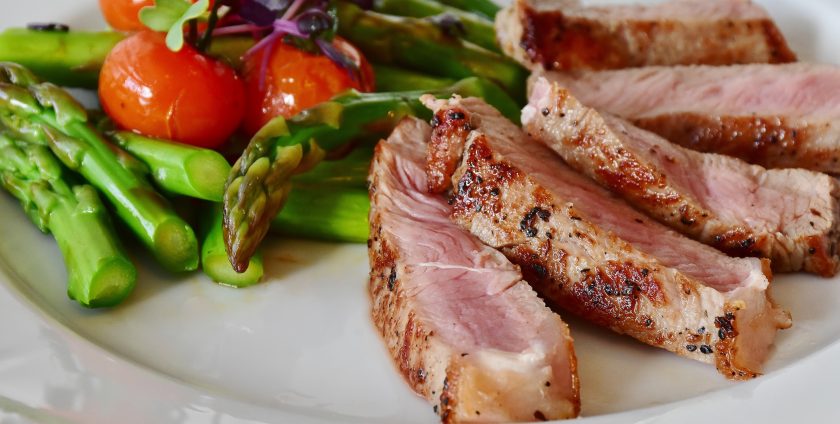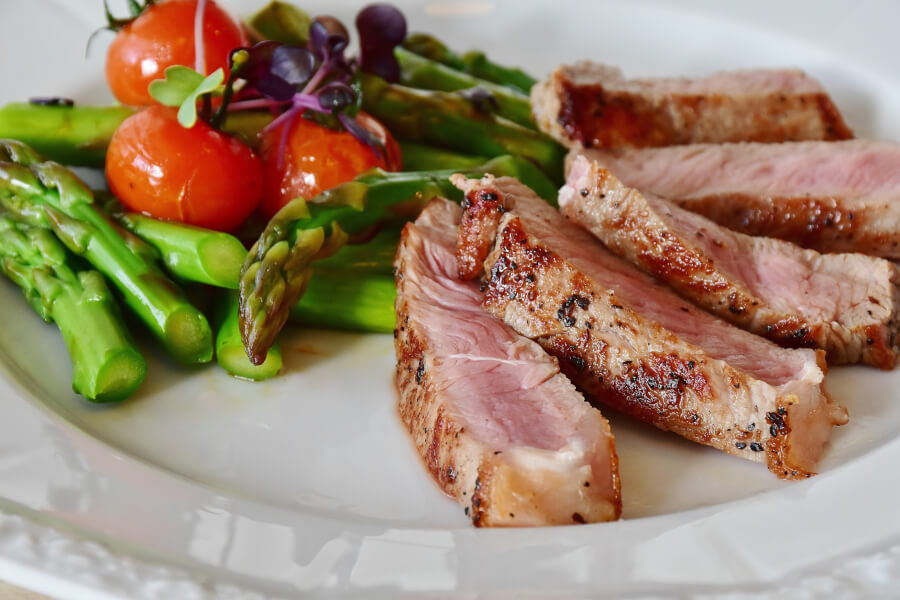Pack a Punch with Protein!

At Paramount Wellness, we talk a lot about getting enough protein – and that’s because it is so important!

Why should you care about making sure you get enough protein?
Proteins are the basic foundation of the human body. Proteins are complex molecules that are made up of smaller units called amino acids and help build muscle, blood, and internal organs. In fact, hair and nails are mostly made of proteins.
It is an important building block of bones, muscles, cartilage, skin and blood – it is used to build and repair tissue – and you need it to make enzymes, hormones, and other body chemicals.
Protein is the key source of amino acids which help your body to process fats and carbohydrates which in turn ensures you are metabolizing nutrients properly and maintaining healthy weight. If you want to lean up and get rid of unwanted fat, you have to shrink your fat cells. Protein also contains B complexes that are crucial for energy and vitality.
Protein also helps to regulate you blood sugar – preventing those sharp spikes in blood sugar (glucose) levels that we can experience when we eat too many sugary foods and simple carbohydrates. This is also helpful because it makes you feel satiated for much longer between meals, reducing those mid morning or late afternoon sugar cravings. So when you do start to feel snack-y at work, reach for a handful of almonds or a strip of beef jerky and you will be more easily able to avoid that table of holiday snacks in the break room!
A large and growing body of research suggests that US government’s proposed levels of protein intake are far below what is necessary for optimal health not to mention athletic performance.
How much protein should you be eating? It’s probably more than you think! See our other blog post here to help you get an idea of what you own body needs.
Here are some easy ways to sneak more protein in your diet.
Prep meat strips
Cooking for the week on a Sunday? Make extra! Honestly, whenever you cook, throw some extra chicken, fish, or other meat source and keep the leftovers in your fridge. That way they are cooked and ready to be thrown on top of your breakfast or lunch for an added protein boost!
Keep nuts on hand
This is such an easy way to get more protein throughout the day and keep you full! I always have a Ziplock bag of raw almonds in my purse for hunger emergencies! Nuts like almonds, walnuts or cashews are great to have around because they can be eaten on their own, or thrown on your salad at lunch! As with many healthy foods – raw is best – try and avoid the salted and flavored varieties (sugar dangers!).
Make some hard boiled eggs
Making a batch of hard boiled eggs is probably one of the easiest things you can do to have protein on hand! One hard-boiled eggs can give you 6 grams of protein. This is another great breakfast or mid morning snack to grab as you’re heading out the door to work.
Add beans
Beans are a great addition to salads, soups or side dishes. Beans are full of fiber and add an average of around 15 grams of protein per cup. This is one of the best plant-based protein sources. Just try and plan ahead so that you can soak your dried beans before you cook them. This disables anti-nutrients such as phytic-acid, lectins, and enzyme inhibitors which are the culprits that give some people gas, heartburn, reflux or other digestive ills. Soaking beans is the best way to enhance digestibility and nutrient absorption.
Try some ancient grains
While quinoa is the gluten-free superstar of the health-conscious – and for good reason – it packs a dose of all of your essential amino acids, there are some other great alternatives out there. If you’re feeling adventurous in the kitchen one night – try coking with spelt, teff, amaranth or millet, which are all good protein sources. Per cup, spelt has over 10 grams, teff & kamut both have about 9 grams, and quinoa has about 8 grams. All these grains are also gluten-free so they are always a better choice than pasta, couscous, farro or other wheat-based grains.
Want a longer list of protein sources? Again, refer to our older blog post for a great list of protein options.
Just a reminder that not all protein is created equal. You want to make sure you are getting clean sources of protein for optimal absorption and benefit to your body. Conventional meats come with a laundry list of dangers so try and avoid those as often as possible. Grass-fed is always best. Add good, organic plant-based sources in-between to help balance the budget.
For a great source of guaranteed grass-fed protein – click here
Here’s another local Colorado company working to provide good meat choices to consumers.
If you have any further questions about proteins, sources & how to implement them into your diet, please call us – (720) 460-0766. We have lots of nutrition knowledge to share!